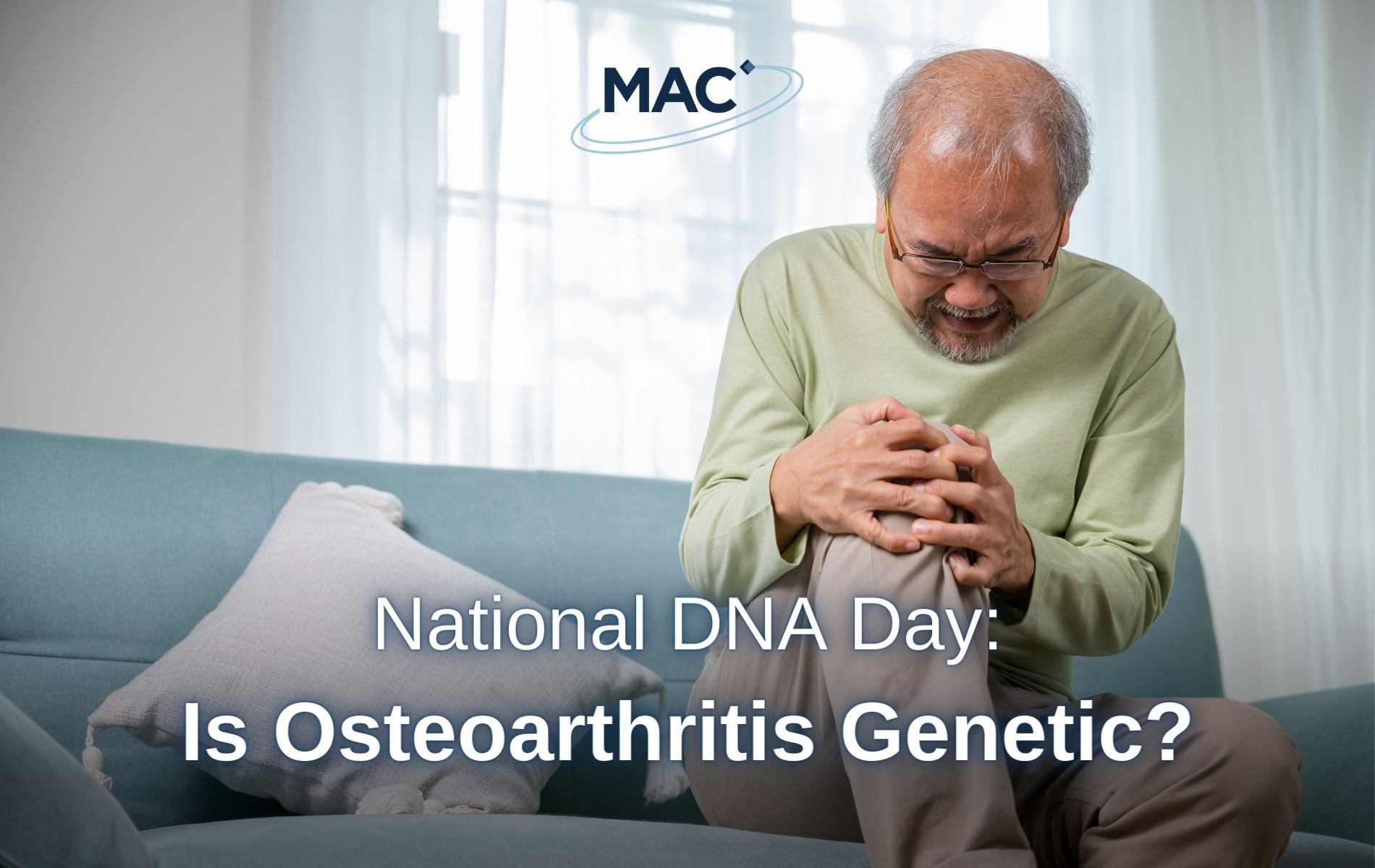As we celebrate National DNA Day, a day dedicated to commemorating the discovery of the DNA double helix in 1953 and the completion of the Human Genome Project in 2003, it’s fitting to explore the intricate relationship between genetics and health.
Among the myriad of medical conditions influenced by genetic factors, osteoarthritis stands out as a common yet complex example.
What is Osteoarthritis?
Osteoarthritis (OA) is a degenerative joint disease characterised by the breakdown of cartilage, the tissue that cushions the ends of bones within joints. This gradual deterioration can lead to pain, stiffness, swelling, and reduced mobility, commonly affecting the knees and hips. Data show that up to 1 in 5 adults over 45 in England1 are living with osteoarthritis, and the disease can impact the quality of life significantly.
Could OA be Genetic?
While OA is often associated with aging and wear-and-tear on the joints, and is likely influenced by many different factors, emerging evidence suggests that genetic predisposition may also play a role in its development.
Family studies suggest that individuals with a family history of OA may be at a higher risk of developing the condition themselves. One study found that up to 70% of OA cases could be influenced by genetics, with a stronger link for the hip, hand, and spine2.
Moreover, twin studies have revealed a higher concordance rate for OA among identical twins compared to fraternal twins, suggesting a strong genetic influence. In one UK study analysing female twins, researchers found that genetic influence on hand and knee OA was between 39 – 65%, independent of known environmental or demographic factors3.
Recent advances in genomics have enabled scientists to identify specific genes and genetic variants associated with the risk of developing osteoarthritis. These genetic variants are often located in or near genes involved in joint structure, cartilage metabolism, inflammation, and bone remodelling pathways. As of 2022, over 100 different DNA variants have been discovered to be associated with knee OA4.
Environmental Factors and OA
It’s essential to recognise that genetics represent only one piece of the osteoarthritis puzzle. Environmental factors, such as obesity, joint injury, occupational hazards, and physical activity also contribute significantly to OA risk and progression. For instance, individuals with a BMI above 30 were around seven times more likely to develop knee OA than those with a BMI between 18 and 255. Furthermore, OA is typically an age-related disease, with nearly 90% of people with OA being over the age of 456.
Living with Knee OA?
MAC Clinical Research understands the challenges that come with living with knee OA and is committed to improving the quality of life for those living with the condition through groundbreaking clinical trials, researching potential new treatments.
MAC Clinical Research is looking for people aged 40 to 80 who would like to take part in a new clinical trial for people living with pain from osteoarthritis of the knee which is not responding to usual medications.
Eligible participants will receive up to £1690 for their time and commitment, plus reasonable travel expenses.
For more information and to register your interest, visit MAC’s Knee OA Research Webpage.
1 Arthritis Research UK – Prevalence of osteoarthritis in England and local authorities: Birmingham
2 HHS Public Access – Occupational and genetic risk factors for osteoarthritis: A review
3 BMJ – Genetic influences on osteoarthritis in women: a twin study
4 Osteoarthritis and Cartilage – Genetics of osteoarthritis
5 Indian Journal of Medical Research – Obesity & osteoarthritis
6 United States Bone and Joint Initiative – The Burden of Musculoskeletal Diseases in the United States






